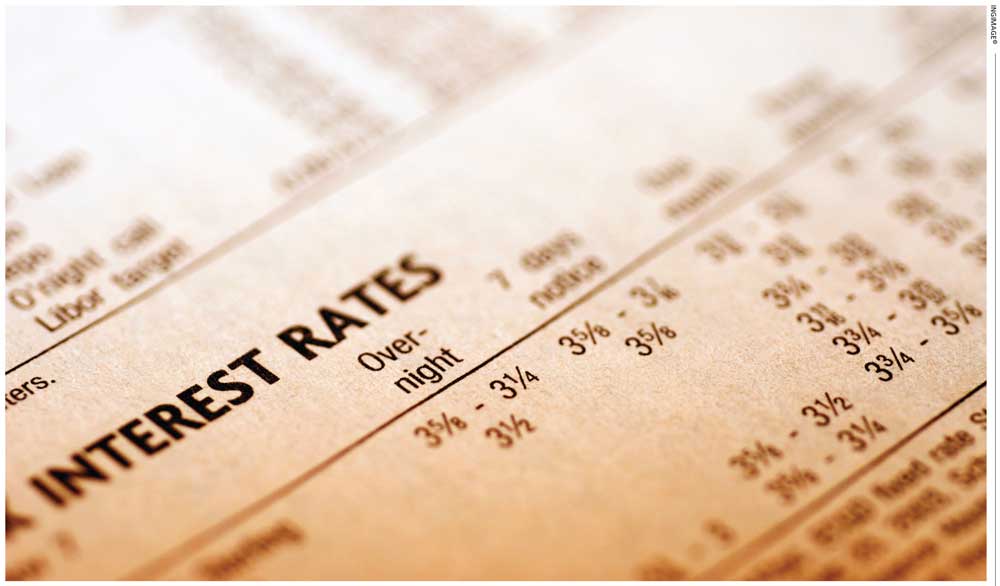FISCAL AFFAIRS
THE INTEREST RATE PIVOT
Samantha Amerasinghe believes that lower interest rates are on the cards

Though lower interest rates are on the horizon, the question is when? A leading question on the minds of investors is when might the US Federal Reserve announce its first interest rate cut after what has been the most aggressive tightening cycle in decades?
Major central banks have been signalling that interest rates will likely fall in the coming months. However, the hotter than expected stateside inflation print in January pushed back expectations of when those cuts would begin.
The Fed began hiking rates in March 2022 to curb inflation. Its 11 rate hikes since then helped bring down annual inflation in the US to 3.1 percent in January from a high of 9.1 percent in June 2022.
Nevertheless, inflation remains above the regulator’s two percent target and a rate cut in March seems highly improbable at the time of writing. Many market participants expect to wait longer and have pencilled in a first cut following the Fed’s 12 June meeting.
Better inflation data will be the key as the Federal Reserve assesses its next move.

Notably, its concerns aren’t centred on stronger growth but the strength of the labour market. Payroll data continues to surprise on the upside (in January, it was more than double the expected amount) and justify the Fed’s patience in keeping borrowing costs on hold for the time being – at a 23 year high of between 5.25 and 5.5 percent.
Despite the unexpected surge in jobs growth, the Federal Reserve is convinced that the labour market is unlikely to trigger inflation. Most officials think it remains on track to cut rates later this year with inflation likely to fall even if the US economy continues to add jobs.
If the labour market were to weaken however, one would argue for announcing interest rate cuts sooner.
Volatility around rate cut probabilities will persist as the Fed’s policy remains data dependent. It’s not surprising that inflation hawk and former Treasury Secretary Larry Summers holds a contrarian view; he recently opined that there’s a 15 percent chance the Federal Reserve may be compelled to raise rates.
With rates at nearly a 16 year high, the Bank of England softened its stance on when it might cut the cost of borrowing. And with policy makers divided on their rate cut prognoses, markets tempered their expectations of rate cuts to a 50 percent chance of a 25 basis points cut in June.
The ECB has also taken a softer stance on inflation and hinted at the possibility of policy easing in the months ahead. Markets are predicting that the European Central Bank could be the first major monetary authority to cut rates with a high probability of a 25 basis points rate cut in April. Japan however, which is the perennial outlier, could hike rates soon.
Policy makers in emerging markets have benefitted from years of building buffers to mitigate external pressures by creating additional currency reserves, moving towards exchange rate flexibility, reducing reliance on foreign capital and pursuing proactive monetary policies.
However, they need to stay vigilant and cognisant of the challenges of rising economic and financial fragmentation in a disinflationary world.
The first challenge pertains to capital flows – narrowing interest rate differentials on the back of emerging markets cutting rates faster than advanced economies could lead to capital leaving emerging market assets for more favourable alternatives in advanced economies.
Secondly, divergence in central banks’ monetary policies between advanced economies and emerging markets show large spillovers to emerging markets from higher interest rates in advanced economies.
Furthermore, quantitative tightening by major advanced economies continues to withdraw liquidity from financial markets and this could additionally weigh on emerging market capital flows.
The stakes are high as the Fed approaches a pivot in this policy cycle from tightening financial conditions to easing them at some point. Chances of a recession in the US and the world economy have diminished but risks remain.
For instance, energy prices may move substantially higher in response to the Israel-Gaza conflict or consumer spending could start to wane as interest rates begin to hurt more vulnerable sectors of the global economy.
However, the US economy has remained remarkably resilient so far with a steady job market and inflation in check. This benign scenario has insulated the Fed from political pressure; but at some point, its actions will impact the 2024 election.
If the Fed waits too long to reduce interest rates and takes action closer to the November presidential poll, it could be seen as political manoeuvring. Starting a rate easing cycle in June seems to be timely for the Fed to maintain some semblance of political independence.
The timing of the rate cuts will be tricky, given the risk of resurgent inflation – so the best way forward is to proceed with caution and wait for a true signal that it is time to act.




